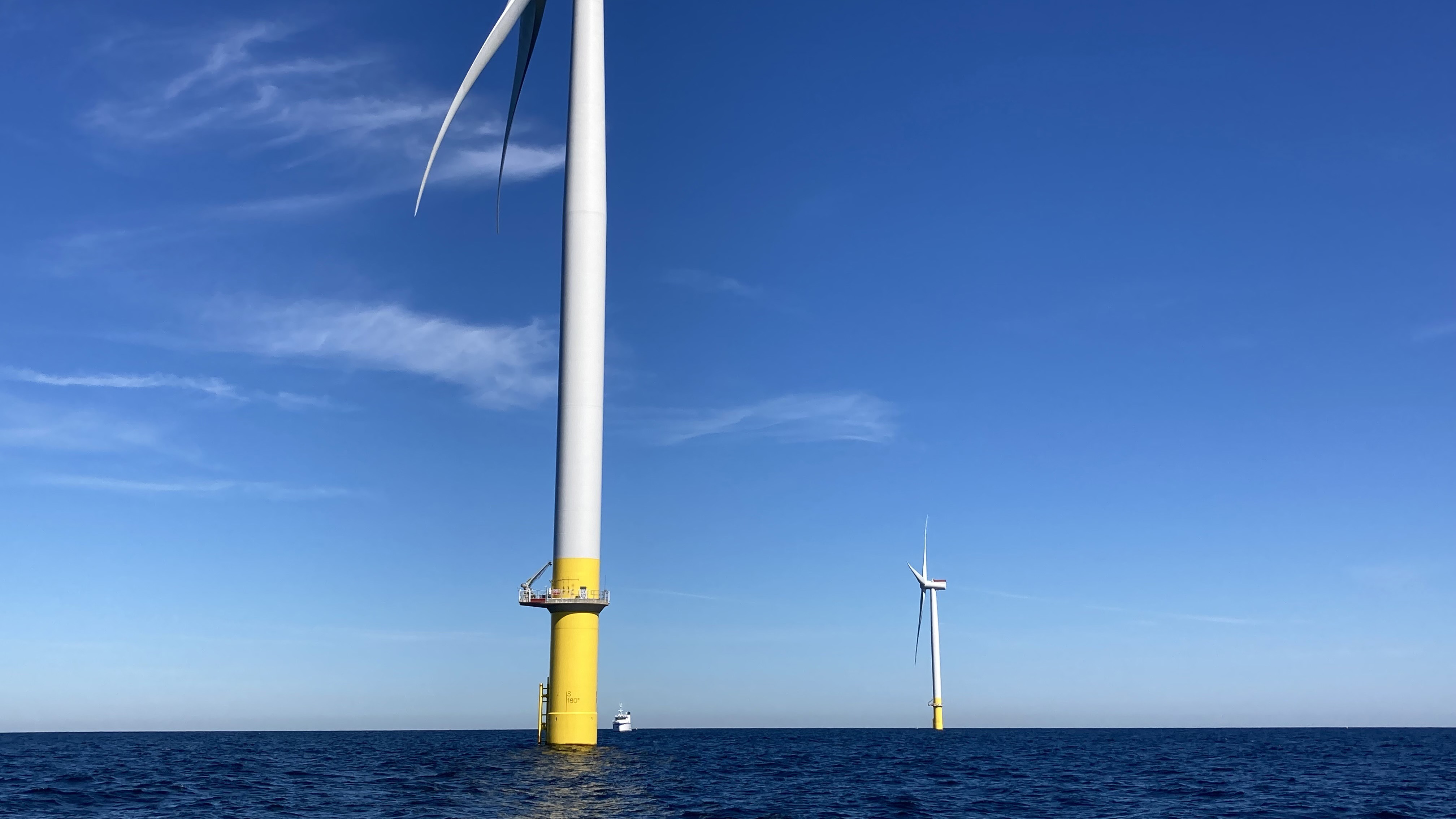
Virginia has outlined a sweeping new path forward to cut climate-warming greenhouse gas emissions and transition to renewable energy.
The Priority Climate Action Plan is part of a federal climate pollution reduction grant program funded by the Inflation Reduction Act that will direct billions in federal dollars for states to implement climate actions.
The Commonwealth received $3 million from the Environmental Protection Agency to complete the plan and a more in-depth followup next year. The Hampton Roads Planning District Commission also got $1 million to do a regional plan.
The plans are due by March 1 to the EPA, which will then review submissions from across the country to determine which states should receive money to implement the planned actions.
The state Department of Environmental Quality released a draft of its climate action plan last week that envisions changes in homes, businesses and industries across the Commonwealth, with a focus on helping lower-income communities disproportionately affected by climate change.
“This lays out some pretty substantial and strong steps, especially in the near term, that's really inclusive of every single sector that involves fossil fuels,” said Tim Cywinski with the Sierra Club’s Virginia chapter. “That was a very big, pleasant surprise to us.”
Here are some of the major themes.
Decarbonizing and renewable energy
Generating electricity from fossil fuels like coal and natural gas emits large amounts of carbon dioxide into the atmosphere that then help warm the planet. The electric power industry currently produces about a fifth of the Commonwealth’s greenhouse gas emissions.
Decarbonizing means powering electricity with renewable sources like solar and wind instead, getting rid of carbon emissions from sources including power plants.
“Decarbonizing is kind of the magic phrase here,” Cywinski said. It’s “the fancy way of saying we’re reducing climate pollution.”
The state wants to help local governments, school districts and others switch their fleets of cars and buses to run on clean energy.
In the new state plan, DEQ officials propose accelerating the development of wind, solar and nuclear energy; funding microgrids with their own battery storage; and investing in newer potential energy sources like hydrogen and small modular reactors. (Hampton Roads is in the midst of a $6.5 million project studying the viability of hydrogen energy.)
They suggest expediting approval of projects to build transmission lines, which are crucial to the distribution of renewable energy on the grid, and building more infrastructure for electric vehicles.
The state has also expressed interest in carbon capture technology, which could theoretically grab carbon dioxide from the atmosphere after it’s released. The strategy has been criticized by environmental advocates who say it’s a distraction from proven ways to cut emissions at the source.

Hybrid shuttle carriers at the Port of Virginia, which use half-electric power rather than all diesel.
Transforming transportation and heavy industry

Transportation accounts for the largest share of Virginia’s greenhouse gas emissions, about 40%. That includes cars, ships that move cargo and the massive trucks that haul it on land.
The new climate action plan includes a focus on cutting emissions from the latter at the Port of Virginia. The port has already been working on a project to reach net-zero carbon emissions by 2040, and recently announced it’s now running on 100% clean energy sources.
The new plan could help incentivize and accelerate actions like electrifying yard trucks, forklifts and straddle carriers.
“All of those types of things that are still running on diesel, we're looking to convert those to electric,” said Cathie Vick, chief of development at the Virginia Port Authority.
The plan also suggests relieving railroad bottlenecks to save time and energy, helping airports electrify equipment and giving incentives to farmers and landscapers to switch tractors and mowers to electric.
The state further notes opportunities in the manufacturing industry by redesigning products to minimize embodied carbon and reinventing industrial processes to reduce emissions.
Energy efficiency
Becoming more energy efficient means simply using less energy wherever possible. It’s a big and often overlooked piece of the fight against climate change.
Virginia proposes making residential and commercial buildings more energy efficient by helping people replace appliances that currently run on fossil fuels, weatherizing homes to prevent energy waste, strengthening building energy codes and enforcement and incentivizing efficiency at bigger facilities that use a lot of energy, like data centers.

The new renewable natural gas facility at the Regional Landfill in Suffolk opened in October.
Targeting other greenhouse gases
While carbon dioxide makes up a large majority of the state’s emissions – about 80% – several other greenhouse gases contribute to climate change, especially methane.
Methane is more than 28 times as potent as carbon dioxide at trapping heat in the atmosphere, according to the EPA. It’s often generated by agriculture, wastewater treatment plants and landfills as organic materials break down and decay.
Virginia hopes to cut methane emissions by encouraging composting, catching methane leaks and capturing it at the source to convert for a fuel called renewable natural gas. (The Southeastern Public Service Authority recently launched a project that does so at the Regional Landfill in Suffolk.)
DEQ officials also mention targeting a greenhouse gas called sulfur hexafluoride — which is often used in electric power systems — by encouraging reductions at microchip manufacturers.
Using nature
In addition to cutting carbon emissions, Virginia officials say they want to restore ecosystems that naturally help store carbon and mitigate climate impacts like flooding.
Storing carbon in soil, forests, wetlands and underwater grasses is called carbon sequestration. DEQ proposes restoring more of those ecosystems, prioritizing brownfield sites of former coal mines or power plants.
The state also said it’s interested in exploring carbon markets or tax credits. Virginia pulled out of a regional carbon market last year. Environmentalists are fighting the move in court.

Underwater eelgrass off the Easten Shore in 2022. The vegetation stores carbon and may help fuel a "blue carbon" market in Virginia.
Hampton Roads’ plan

The regional Planning District Commission is also finishing up a climate action plan that will go to the EPA, after months of consulting with local officials and other stakeholders including the Port of Virginia and Hampton Roads Sanitation District.
Many of the measures overlap with what the state has outlined, including cutting emissions at the port, restoring coastal wetlands, methane capture at landfills and boosting energy efficiency.
The group also recommends developing an electric vehicle procurement plan to support switching to EVs, and reducing car use by building more bike and walking paths.
Moving forward
States, cities and tribes across the country are now vying for a limited number of federal grants to start putting all these plans in action.
Cywinski with the Sierra Club said he hopes Virginia’s plan is a turning point toward holding polluters accountable.
“This plan shows that they (at DEQ) know how to look at things comprehensively,” he said. “We hope that this translates into other areas of their accountability work.”
Virginia now has to develop a more comprehensive version of the plan by mid-2025. It will include an updated accounting of all of the Commonwealth’s current and projected greenhouse gas emissions.
DEQ is accepting public comments on the draft plan through Friday.

